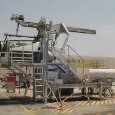-
Posts
584 -
Joined
-
Last visited
-
Days Won
10
Content Type
Profiles
Forums
Store
Gallery
Downloads
Calendar
C-130 Hercules News
Everything posted by pjvr99
-
The TransAll C160 can feather props without shutting down engines - makes for a great airshow, belting down the runway at Vmax, feathering just before the crowd, then going into a climb at the end, put the throttles to the wall, climb to +-1000ft, wing-over and battle-drop, full stop landing in less than 1000 feet
-

Engine throttle creep during high power setting
pjvr99 replied to Hangman's topic in C-130 Technical
No Problem. let us know what the final result is .... -
second stage vanes destroyed does not explain the low start TIT, or downstream fire still very unusual .....
-

Engine throttle creep during high power setting
pjvr99 replied to Hangman's topic in C-130 Technical
Agree with Steve1300, gimbal is most often the culprit. Also check cable tensioners at 245 bulkhead, and make sure all pulleys are moving freely. We had a condition cable jump recently - I believe a seized pully bearing in the horse collar was the culprit -
Old mans pants - AC duct in the cargo bay fwd of the wing box on the RH side (APU aircraft)
-
Helen Keller bolts!!! forgot those ..... :laugh: :laugh: :laugh:
-
Pork chops are \'haram\' - known as lamb chops in the sandbox Lighthouse - area between #2 and #3 bearing in the engine Snake pit - airconditioning bay in the B727, back of the fwd cargo bay Hog trough = horse trough Beaver tail = platypus tail Dogbones are condition lever transfer arms on the engine control gimbal
-
The owner of the picture is a member - pretty sure he won\'t mind
-
A C130 of the Belgian Air Force has its tail painted to commemorate 60 years of transport service - courtesy of Bob V
-
Second bird in as many months ..... going to drive their insurers crazy!! Wishing all a speedy recovery
-
!!! I stand humbly corrected!!! WOW!!! Tnx Fraulein .....
-
None that I know of, unless locally modded/installed
-
Think this has been \'shopped .....
-
Depending on where the crack is, it may intitially tend to quench the flame instead of shape it. My thoughts however tend to the flame transfer tube. Some tubes have an insert joining the cans, while others are clamped without the insert. Maybe the clamp has broken, letting in air preventing initial ignition ..... only way to really find out is to pull the turbine off :(
-
Never seen it before, but a quick thought would be that the flame transfer tube/s to the other cans are damaged/missing; or, that there is a burnt/cracked can. Also may have only one exiter firing. Have you done a performance run?
-
Not a dead horse, by any means. I\'d rather say Lockheed, Boeing and other major US players have been napping. This thing is a brute with 11000SHP per engine, and all the nice bells and whistles. The only really stupid thing I can see on it is 2 engines turn clockwise, and 2 anti-clockwise. I understand the thought behing induced drift, but from a logistical point of view you now have to keep twice the number of props and engines spare. What do you do when you have a series of failures on (e.g.) your CCW engines? Instead of 1 engine and prop for a deployment, you now need 2 ..... crazy frogs Give me my trusty C130B/E/H any day
-
pjvr99 wrote: Per my origional post - problem is worst at take-off
-
GCSTroop wrote: Complete rudder replaced - out of balance, and could not be balanced
-
Bob Woods wrote: At 11000shp I think the braces are to protect the wingbox, as well as maintaining fuselage clearance (10inches/25cm)
-
Just found these pics of the Marshalls Herk doing ground runs [img size=150]http://www.flightglobal.com/blogs/flight-international/A400M%20engine%20run.jpg [img size=150]http://www.flightglobal.com/blogs/flight-international/A400M%20engine%20run%20zoom.JPG
-
Marhaba from the Magic Kingdom - welcome
-
TalonOneTF wrote: Ah well, anything more than 2 days old is ancient historyB) - forgot a piccie had been posted:blush: . Tnx
-
Good to hear this - keep us posted ..... one question: are you flying a standard Herk or stretch?
-
Snow Aviation has a bird without externals, but modified tips ..... http://www.airliners.net/photo/Snow-Aviation-International/Lockheed-Martin-WC-130J/1214268/M/
-
Talon, I hear you on the engine swap, but I believe engines have been eliminated on the last FCF. KEF, she\'s going in for ISO and all cables etc will be replaced. I also suggested your list of possiblities, so we\'ll see after ISO.

